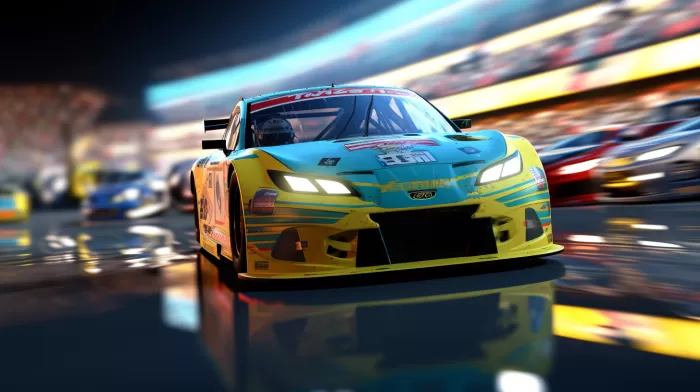There’s something exhilarating about watching professional race car drivers zip around the track at breakneck speeds. But did you know that tuning in to televised races, like NASCAR events, might be influencing the way you drive on public roads? In fact, a study of West Virginia drivers found a direct correlation between watching NASCAR events on TV and an increase in aggressive driving, leading to more accidents.
The Connection Between Watching Racing and Aggressive Driving
The study, published in the Journal of Applied Social Psychology, revealed that traffic accidents increased five days after widely viewed races were shown on television. Researchers delved into the effects of more than 150 televised races that occurred between 2003 and 2006. On the fifth day following a race, car wrecks caused by aggressive driving spiked by approximately 20 percent.
It’s worth noting that this phenomenon isn’t exclusive to race car fans. Research has shown a similar pattern among football fans as well. According to an analysis of 25 years’ worth of traffic data, researchers found that the number of traffic fatalities increased after the broadcast of professional football games, especially if the game was highly contested or featured the local team. It turns out that even watching fantasy violence can increase the likelihood of real-life aggressive behaviors.
The Psychological Explanation
So, what’s going on here? Why does watching fast-paced, competitive sports influence how people drive?
Psychologists believe that viewing aggressive content stimulates parts of the brain responsible for aggression. Their theory is that watching race car drivers exhibit reckless and risky behavior on the track may excite viewers and prompt them to mimic these behaviors on the open road. Similarly, watching full-contact sports, like football, can heighten fans’ sense of aggression and increase their propensity for reckless behaviors behind the wheel.
This idea is supported by the famous Bobo doll experiment conducted by psychologist Albert Bandura. Bandura’s study showed that children who observed adults exhibiting aggressive actions towards a toy were much more likely to display the same behaviors themselves. This indicates that people might indeed be more inclined to emulate aggressive behaviors after witnessing them firsthand.
How to Combat the Effects of Viewing Aggressive Content
Now that we know about the potential dangers that come with watching fast-paced, aggressive sporting events, how can we combat these dangerous driving habits?
- Stay mindful: Being conscious of the potential risks after watching an intense race or game is key. Catching yourself before you lose control on the road and reminding yourself to drive safely can help you avoid dangerous situations.
- Create mental separation: Try to separate the world of competitive racing from your everyday driving. Keep in mind that these professional drivers are on closed courses with extensive safety measures put in place; public roads are not the place for aggressive maneuvers or speeding.
-
Practice safe driving habits: Maintaining safe driving techniques should be a priority, regardless of whether you’ve recently viewed aggressive content. Keep your eyes on the road, don’t engage with aggressive drivers, and never succumb to road rage.
-
Educate younger drivers: It’s important to discuss the dangers of aggressive driving and its potential increase after watching violent or competitive sports with new drivers, especially teenagers. Ensuring that they understand the risks associated with this behavior can help prevent possible accidents.
Conclusion
While it’s undeniably enjoyable to watch race car drivers speed around the track or your favorite football team duke it out on the field, it’s crucial to acknowledge the potential effects these high-intensity events can have on your driving. Keep the risks in mind and maintain a level-headed approach when getting behind the wheel, making sure to prioritize safe driving habits at all times. And remember, the race track excitement should always be left to the professional drivers.



